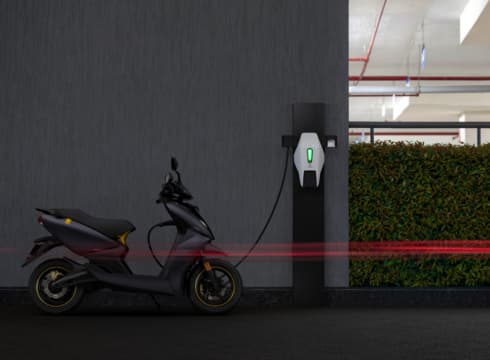Using a tool jointly developed by TIFAC and NITI Aayog, eight separate scenarios were developed for analysing the future penetration of electric two-wheelers in the country
The report predicted a penetration of 72% in a ‘technology driven scenario’ where current initiatives such as subsidies are withdrawn by 2024
At a certain point of time in future there may be an appropriate ecosystem for enforcement of a regulation towards electric mobility or other clean transport options: Report
Inc42 Daily Brief
Stay Ahead With Daily News & Analysis on India’s Tech & Startup Economy
Government think tank NITI Aayog has said that the shift to electric mobility, particularly in the two-wheeler segment, may happen faster than anticipated.
In an ‘optimistic scenario’, there will be 100% penetration of electric two-wheelers in the country by the financial year 2026-27 (FY27), a report released by NITI Aayog and Technology Information, Forecasting and Assessment Council (TIFAC), titled ‘Forecasting Penetration Of Electric Two-Wheelers In India: A Bottom-Up Analysis’, on June 28 said.
It also predicted a penetration of 72% in a ‘technology driven scenario’ where current initiatives such as subsidies are withdrawn by 2024.
Using an agent-based tool jointly developed by TIFAC and NITI Aayog, eight separate scenarios were developed for analysing the future penetration of electric two-wheelers in the country. These scenarios were constructed on the basis of three major factors – demand incentives, cost of battery and vehicle performance in terms of both range and power.
The report also called for instituting regulatory norms to govern the EV space in future. “At a certain point of time in future, there may be an appropriate ecosystem for enforcement of a regulation towards electric mobility or other clean transport options. But as the present analysis shows, there are plenty of opportunities for accelerating adoption of electric vehicles through technological improvements and other interventions,” it said.
The report said that the projected sales of two-wheelers in the country could surge to 2.2 Cr units annually by FY31 in the optimistic scenario. For such a scenario, battery costs should continue to fall at a compounded annual growth rate (CAGR) of 8%, vehicle performance should increase by 20% till FY24 and demand incentives should continue till FY31.
In the technology driven scenario, where incentives are withdrawn post FY24, the battery cost is slashed annually by 8% and the performance of two-wheeler EVs is improved by 5% between FY24-FY26 and by 10% in FY27, the sales volume is projected to reach 21.02 Lakh units annually by FY24 and 1.79 Cr units by FY31.
In the ‘Performance-Driven Scenario with Full Constraint’, where demand incentives are withdrawn after FY24, battery cost is reduced annually by 2% while range and power are improved by 5% annually between FY24-27, sales of 12.70 Lakh units are projected in FY24, which will rise to 17.87 Lakh units by FY31.
The ‘Challenged Diffusion Scenario’, where most market conditions are unfavourable, will lead to a maximum market penetration of 5.82% in FY24, followed by a further decline to 3.1% in FY31. Sales would hover around 9.85 Lakh units in FY24, while it will settle around 7.80 Lakh units at the end of FY31.
The report noted that all three factors have a positive bearing on the adoption of electric mobility in the country. It also said that the recent petrol-hike and ‘positive mindset’ about EVs could play a pivotal role in the switch to EVs.
The report also highlighted the issues plaguing the system. It said that higher battery costs and higher dependency on exports for EV components and subsystems may affect the enhancement of domestic manufacturing capabilities and other policy related measures.
It called on key stakeholders to increase the penetration of charging points across the country, and said that safety of EVs will be an important issue for widespread adoption of EVs.
It must be noted that the recent instances of EVs, especially two-wheelers, catching fire have led to safety concerns. Following this, the Bureau of Indian Standards (BIS) released the performance standard for EV batteries.
“This report provides a much-needed tool to the industry, researchers, academicians, and policymakers to analyse and respond to various scenarios. It can be replicated easily in other segments too, such as four-wheelers, without any hassle,” NITI Aayog chief executive officer (CEO) Amitabh Kant said.
EV penetration in India is extremely low at 0.8%, with two-wheelers contributing a mere 17% to the total sales. According to an Inc42 report, EVs are projected to have a 20% market share in the two-wheeler segment by 2030. The transactional market size of the segment is also expected to soar to $20 Bn by 2030.
{{#name}}{{name}}{{/name}}{{^name}}-{{/name}}
{{#description}}{{description}}...{{/description}}{{^description}}-{{/description}}
Note: We at Inc42 take our ethics very seriously. More information about it can be found here.


